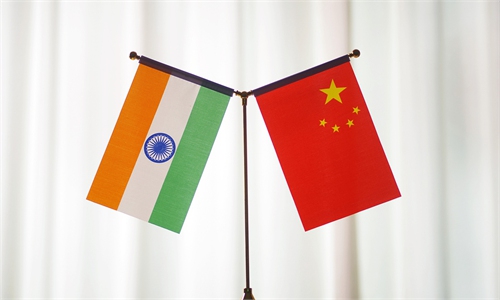
Illustration: Tang Tengfei/Global Times
The Indian government is reportedly to resume elaborate physical inspections on imports from China because it suspects that "a large-scale dumping" of finished products is occurring for intermediate product imports from China, the Hindustan Times reported on Thursday, citing people familiar with the matter.
India's imports from China increased 34 percent in the first eight months of 2022, while its exports to China plunged 37 percent at the same time, the people said. So, "there is a need to restart detailed physical examination of consignments emerging from China or third countries," the people added, according to the Hindustan Times.
First, it must be pointed out that the current surge in China's exports does not mean there is any "large-scale dumping" linked to finished Chinese products exported to India. The surge should be attributed to multiple factors, and some believe one reason is the expansion of India's manufacturing activity.
Factory activity in India grew quite strongly in August. The manufacturing PMI compiled by S&P Global dipped slightly to 56.2 in August from 56.4 in July, but stayed above the 50-mark that separates growth from contraction for the 14th straight month, Reuters reported.
With an expansion in manufacturing, India is trying to make itself to be another world factory after China and an important source of imports for developed countries such as the US. India's exports to the US increased to $76.11 billion in the 2021-22 fiscal year from $51.62 billion in 2020-21, media reported. The achievement puts India one step closer to fulfilling its manufacturing ambitions.
An increase in demand of intermediate products is an inevitable side-effect of the expansion in India's manufacturing activity. It will take time to build a complete and comprehensive industrial chain in India, and before the nation achieves that milestone, it has to import a range of intermediate products from abroad.
China is the only country recognized by the UN as having a complete industrial system. Chinese companies make a lot of intermediate products needed by India's manufacturers, and this partly explains why India's imports from China have kept surging.
It should be pointed out that intermediate products made by China will help to promote continuous growth of India's manufacturing industries. At the very least, intermediate products from China will be irreplaceable in the coming months.
If India resumes elaborate inspections on imports from China, such protectionist behavior will inevitably hinder trade growth for both finished and intermediate product imports because they can always be hardly distinguished. This means India's inspections will backfire and compromise the development of India's manufacturing sector.
If India wants to fulfill its ambitions to make itself a global manufacturing hub, it has to integrate into the Asian economy and the Asian supply chain. This creates space for China and India to build cooperation and trust. During the past decades, China has evolved to become the center of regional supply chains, and India cannot afford to cut its economic links with China.
Efforts to manage differences on the basis of mutual benefit and to enlarge areas of common interests can help the two countries achieve a win-win result. It is understandable that India may want to cut its trade deficit with China but there is no need to be overly nervous about the increased imports from China.
The trade deficit has long been a source of friction between the two countries. Now, India needs to have the courage to break its inertia thinking and accord high priority to the development of its manufacturing sector, and stick to promoting intermediate products trade with China.
The author is a reporter with the Global Times. bizopinion@globaltimes.com.cn



